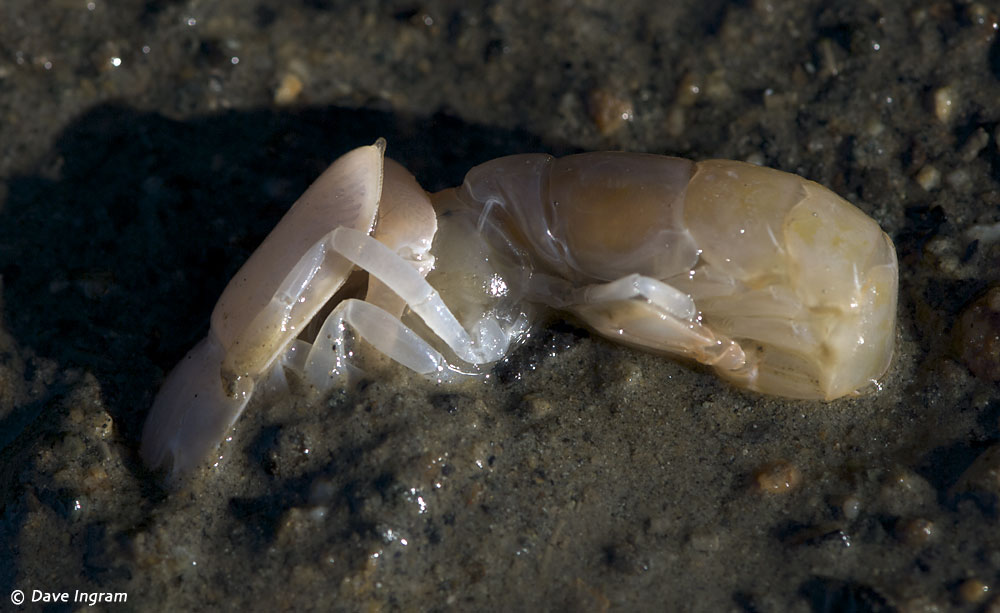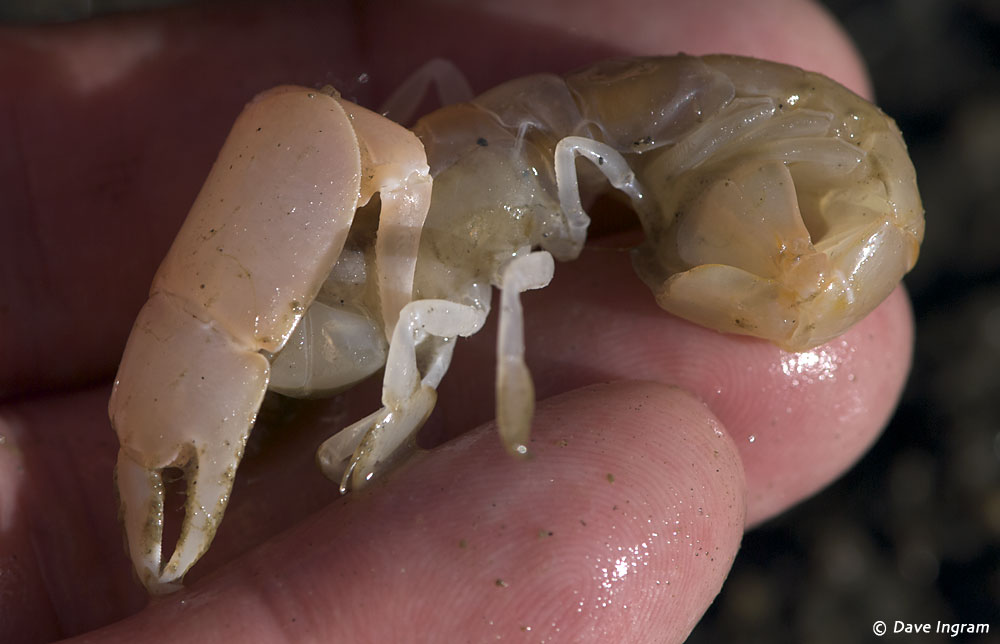
There’s something lurking beneath the mud in the Tofino Mudflats Wildlife Management Area.
Actually, there’s a great deal of biodiversity underneath the nearly 1770 hectares of tidal mudflats protected since 1997 by this WMA. The challenge is getting out to see it without getting stuck in the quicksand like expanse of the mudflats.
Bay Ghost Shrimp
I’ve always been interested in taking a closer look at the mudflats, especially since they harbour so many different organisms. One of the inhabitants that is particularly interesting and occurs in great numbers is the Bay Ghost Shrimp (Callianassa californiensis). This shrimp is a pale white/salmon colour and is so transparent that you can often see its internal organs. The Bay Ghost Shrimp (more closely related to lobsters and hermit crabs) can reach up to 12 cm in length and lives approximately 10 years. I visited the mudflats in late August with the goal of finding some of these strangely beautiful shrimp.
Signs on the Surface
On the surface, the signs of Ghost Shrimp are everywhere. Small conical hills, looking like miniature volcanoes, mark the entrance (or exit) of a complex system of burrows occupied by a Ghost Shrimp. The multiple openings encourage water circulation in the burrows. The shrimp uses modified hind legs to create a current and strains the sediment using fine hairs on other legs to filter out the rich nutrients, decaying organic material and other bits of detritus that occur here where salt and freshwater mix.
Use caution when exploring these flats. I attempted to enter the mud at one location and turned back after walking less than 2 metres. At a second location, I made my way slowly and carefully out through the mud, looking for more stable areas where water flow had removed finer particles of sediment leaving firm(er) gravel and mud behind.

I initially dug into the mud to find a shrimp but the task became Herculean in nature because of the sheer area that needed to be searched and the consistency of the mud. Any time I stopped moving the possibility of losing a gumboot increased dramatically. Instead, I tried the shuffle method which liquefies the mud and causes the Ghost Shrimp to rise to the surface. Much easier!

It’s amazing to think of these pale, delicate shrimp living in such numbers underneath the mud and out of our view. It gives one a picture of the richness of these extensive mudflats near Tofino, British Columbia. There’s also a certain satisfaction in knowing that the area is protected. Given the probability of getting covered in mud or losing a boot it is likely that it will remain a place that is undisturbed, visited only by the very determined!
Additional Information:
The mudflats can be accessed in a number of different places. On my walk, I used the bird sanctuary trail which starts near the Cox Bay Information Centre outside of Tofino, BC. 250 metres from the information centre look for a yellow gate on the right hand side of the road. It’s approximately 3o minutes to the mudflats along an easy walking trail although it does get a little confusing near the end of the trail.
You can read more about the Bay Ghost Shrimp at Middle of Everywhere and at Puget Sound Sea Life. Tofino Time has a good article about the Tofino Mudflats WMA. The Raincoast Education Society leads guided walks into the mudflats and is an excellent source of information.

